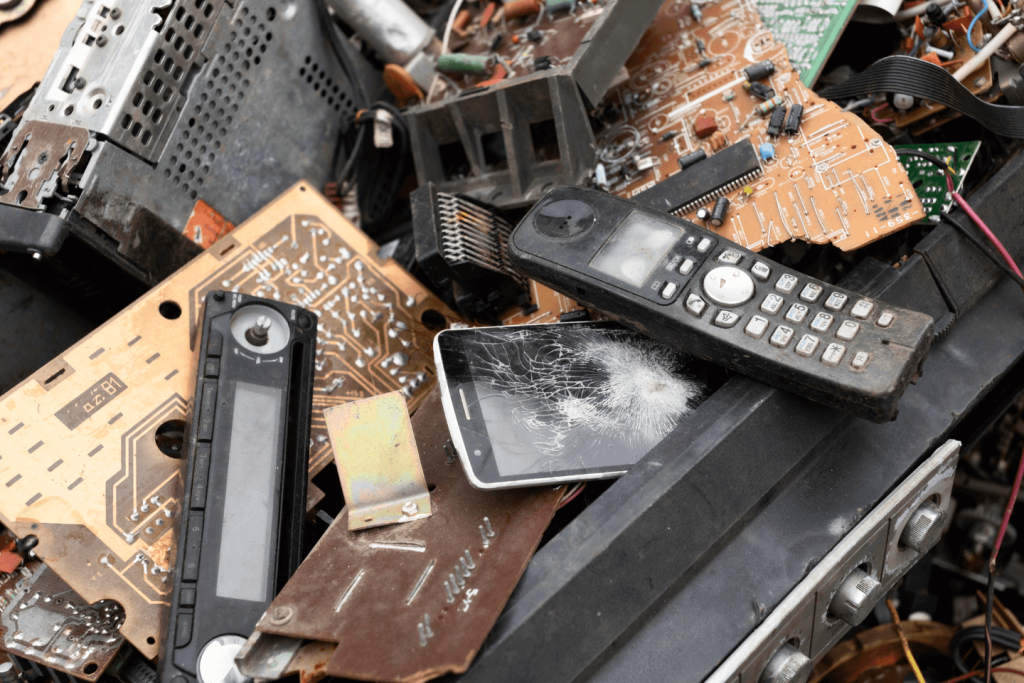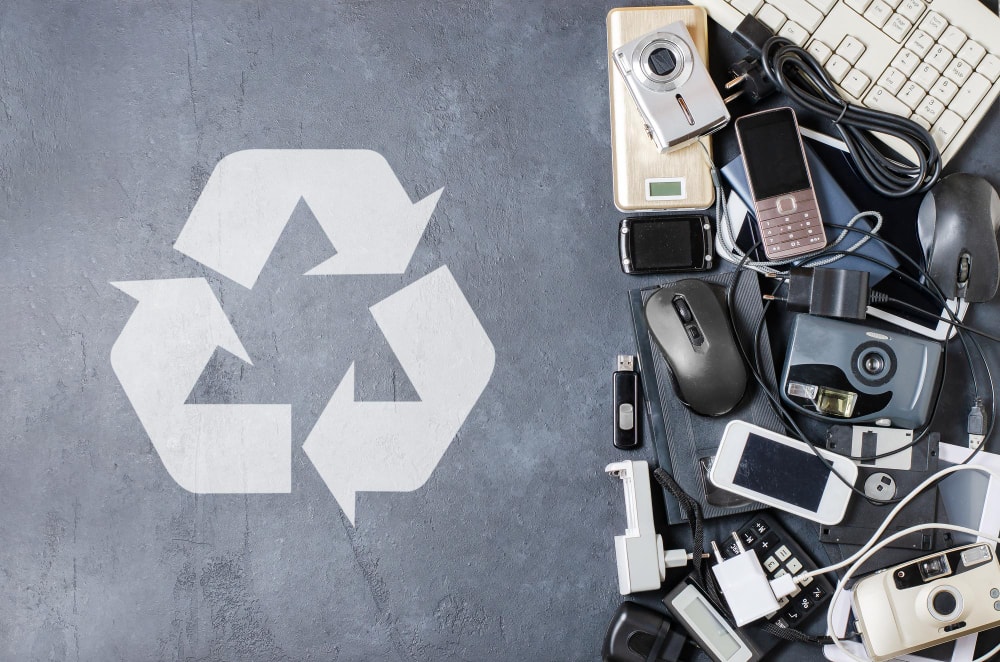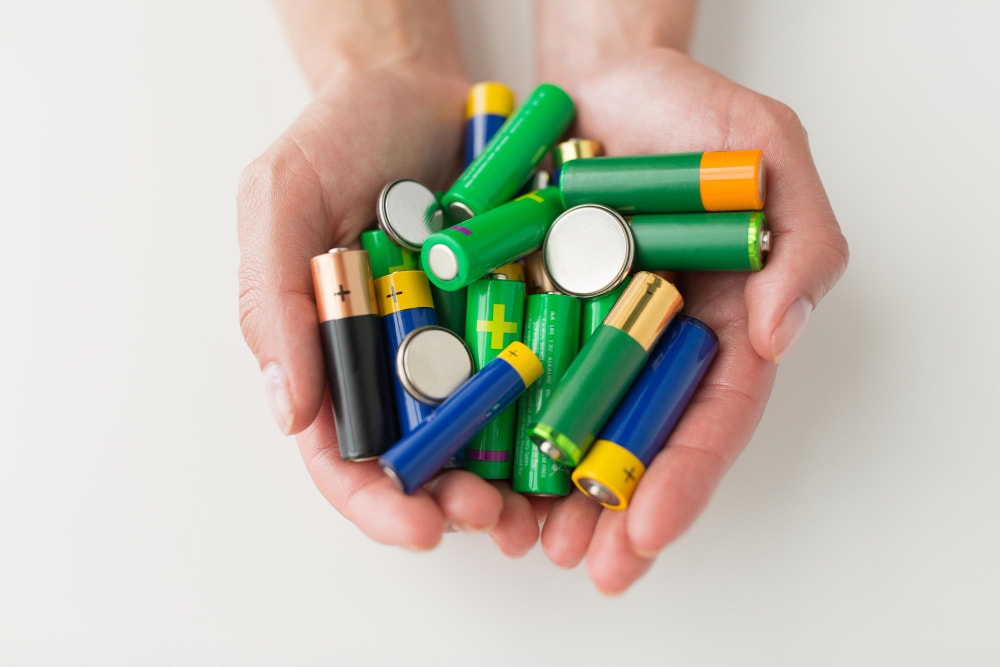
Image source: Freepik
A Responsible Guide to E-Waste Disposal
Technology has become part of daily life, powering communication, entertainment, and work. Yet with every upgrade to a new phone, computer, or appliance, families are left with older items that no longer serve their purpose.
These discarded gadgets are known as electronic waste or e-waste, and managing them has become one of the world’s most urgent environmental challenges.
A guide to e-waste disposal matters because this type of waste has grown faster than almost any other category, creating risks not only for the environment but also for human health.
Definition of Electronic Waste or E-Waste
The term electronic waste, or e-waste, refers to discarded electrical and electronic equipment that has reached the end of its useful life. It covers both large household appliances and small electronics such as mobile phones, tablets, chargers, and computer monitors.
According to the Environmental Protection Agency, e-waste contains hazardous substances like lead, cadmium, and mercury.
At the same time, it holds valuable metals, precious metals, and rare earth elements that can be recovered through proper recycling. This dual nature makes the e-waste recycling process both essential and complex.
The Fastest Growing Waste Stream
E-waste is often referred to as one of the fastest-growing waste streams globally. People buy new electronics at a rapid pace, replacing old devices and outdated electronics long before they stop working.
In many countries, this consumer trend results in large quantities of discarded phones, laptops, washing machines, and old TVs that accumulate in dumpsites and recycling centers.
Without responsible disposal, these items create lasting damage by releasing toxic chemicals and leaving behind hazardous materials.

Electronic Equipment and Its Life Cycle
Raw Materials and Manufacturing
The life cycle of electronic equipment begins long before it reaches households and offices. It starts with the extraction of raw materials such as copper, aluminum, and rare earth elements, which are essential for producing circuit boards, batteries, and other component parts.
The manufacturing stage then combines these valuable resources into finished products like mobile phones, laptops, and washing machines.
Use and Consumption
Once electronic equipment reaches consumers, its active use phase can vary depending on the type of device. For example, computer monitors and refrigerators may last for a decade, while mobile phones and small electronics are often replaced within just a few years.
The shortened life cycle, driven by rapid technological advances and consumer demand for the newest features, accelerates the growth of e-waste streams.
End-of-Life and Disposal
At the end-of-life stage, electronic equipment becomes e-waste. How it is managed at this point determines its environmental impact.
If improperly disposed of, hazardous substances such as lead, cadmium, and mercury can leach into soil and water, posing health risks to humans and ecosystems.
However, when directed into formal e-waste management systems, these devices can be dismantled and safely recycled, allowing valuable metals and other materials to be recovered.
What Items Are Considered E-Waste?
Items considered e-waste range from familiar household appliances to modern gadgets. Large appliances such as washing machines and refrigerators are among the most common contributors.
Smaller items, including old electronics like DVD players, radios, small electronics, and gaming consoles, also fall under this category. Office tools such as printers, scanners, and copiers, along with IT equipment like laptops and circuit boards, are included as well.
Essentially, many electronic devices and similar devices that are no longer in use contribute to the growing e-waste streams in households and industries alike.
Environmental and Health Risks of Improper E-Waste Disposal
In many parts of the world, e-waste is openly burned or dumped in landfills where it slowly deteriorates. This practice releases toxic fumes and toxic chemicals into the air while contributing to greenhouse gas emissions.
Burning plastics from component parts like casings and wires accelerates air pollution, which adds to the global struggle against climate change. Left unchecked, these negative impacts undermine global efforts toward environmental protection and a sustainable future.
Risks to Human Health
E-waste often ends up in informal recycling sites, where workers lack specialized equipment to handle hazardous materials.
Exposure to toxic chemicals such as lead and mercury can result in serious damage to the nervous system, kidneys, and respiratory tract.
Families living near dumpsites are also vulnerable, inhaling toxic fumes that increase risks of cancer, chronic illness, and developmental issues in children.

Responsible Disposal Practices at Home
Households can take practical steps to support responsible disposal practices. One option is to bring old electronics to collection points run by recycling programs or take back programs offered by manufacturers and retailers.
Families can also extend the life of old devices by donating them if they are still functional. Segregating waste electrical items from everyday trash ensures they can be handled separately during the e-waste recycling process.
Residential developments in the Philippines, including communities such as Camella Homes, have already shown how organized waste management systems, through Eco-Bins, can encourage eco-friendly habits.
With facilities for segregation and periodic recycling drives, these neighborhoods can naturally expand their efforts to include recycling electronic waste. By safely disposing of gadgets more conveniently, such communities set examples for how responsible habits can be part of everyday living.
The E-Waste Recycling Process Explained
There are several recycling methods for treating e-waste, depending on the material and equipment involved. Mechanical shredding is widely used to handle large quantities of discarded appliances.
Hydrometallurgical and pyrometallurgical processes allow for the recovery of metals such as gold, copper, and silver from circuit boards.
Batteries and computer monitors require specialized recycling to prevent leaks of toxic substances. By applying these methods carefully, facilities maximize the recovery of raw materials and minimize exposure to hazardous substances.
Recycling e-waste involves multiple stages to ensure that valuable parts are recovered while hazardous substances are properly treated.
Collection and Transportation
The process begins with collection and transportation, where old electronics are gathered from take-back programs, community drop-off points, and recycling electronic waste facilities.
After arrival, items go through careful sorting and dismantling to separate component parts like metals, plastics, and circuit boards.
Shredding and Mechanical Separation
Next, shredding machines break items down, and magnets or water-based separation systems extract valuable resources such as steel, aluminium, and copper. At later stages, advanced methods recover valuable metals, precious metals, and rare earth elements that are critical for producing new electronics.
Treatment of Hazardous Waste
Finally, any remaining hazardous waste is processed using safe methods to neutralize harmful materials before disposal. This step-by-step system ensures that e-waste is safely recycled, reducing its environmental impact while protecting human health.
Recovery of Valuable Materials and Data Destruction
Recycling facilities focus on recovering valuable materials from discarded electronics, ensuring they are repurposed rather than wasted. Part of the process also involves data destruction, which protects personal information before old devices enter the recycling stream.
With community participation and effective recycling programs, the long-term goal of achieving zero e-waste becomes more attainable, securing both environmental and social benefits.

E-Waste Recycling Programs and Take Back Programs
Role of the Environmental Protection Agency
The Environmental Protection Agency (EPA) in the United States plays a global leadership role in the Global Mercury Partnership, promoting responsible disposal practices.
It provides guidelines on how to handle waste electrical items, sets standards for recycling electronic waste, and supports the development of e-waste recycling programs. While the EPA operates primarily in the U.S., its frameworks influence policies in many countries, including developing nations that import or process discarded electrical and electronic equipment.
Learning from such global models can help improve environmental protection measures in the Philippines.
Electrical and Electronic Equipment Regulations
Globally, regulations on electrical and electronic equipment have been established to manage end-of-life electronics. The European Union, for instance, enforces the Waste Electrical and Electronic Equipment (WEEE) directive, which requires producers to take responsibility for the collection and recycling of their products.
These policies ensure that considered e-waste items are properly treated to recover valuable metals and prevent the release of toxic chemicals. The Philippine government has been exploring similar frameworks to strengthen its own e-waste management strategies and improve long-term environmental protection.
International Programs
Globally, e-waste recycling programs are backed by initiatives from organizations such as the Environmental Protection Agency in the United States and similar bodies in many countries.
These include take-back programs that allow consumers to return old devices when purchasing new electronics. Such efforts not only encourage environmentally friendly practices but also ensure that valuable resources are not wasted.
Localized Programs in the Philippines
In the Philippines, several companies and agencies operate e-waste recycling programs aimed at addressing the e-waste problem. Globe Telecom’s E-Waste Zero program collects old electronics, including chargers and small electronics, through nationwide bins.
PLDT-Smart’s Gabay Kalikasan program includes take-back programs for obsolete gadgets. SM Malls, through the Electronic Waste Collection (EWC) Program, have partnered with recyclers to host collection booths for outdated electronics, old TVs, and similar devices.
These efforts show how responsible disposal practices can be implemented across the country.
How Families Can Help Reduce E-Waste
Families can reduce their contribution to e-waste streams by:
- Rethinking their consumption habits
- Donating or reselling old devices prevents usable electronics from going to waste
- Supporting brands that design environmentally friendly products or participate in take-back programs ensures that gadgets are easier to recycle
- Parents can also get children involved in raising awareness about the e-waste problem, showing how small choices at home affect the broader environment.
By actively seeking ways to reduce e-waste, households contribute to protecting natural resources and building a sustainable future.
Conclusion: Building a Sustainable Future Together
The growing e-waste problem underscores the importance of acting responsibly as consumers and communities. With effective e-waste management, including proper disposal, recycling programs, and household-level efforts, it is possible to limit the negative impacts on the environment and protect human health.
Families, businesses, and policymakers must continue working together so that electrical and electronic equipment can be safely handled at the end of its life.
By supporting e-waste recycling programs, every household plays a part in building an environmentally friendly and sustainable future.

Celebrate Life’s Milestones in Camella!
Make unforgettable memories in a Camella home.
Our communities are designed to elevate your living experience.

